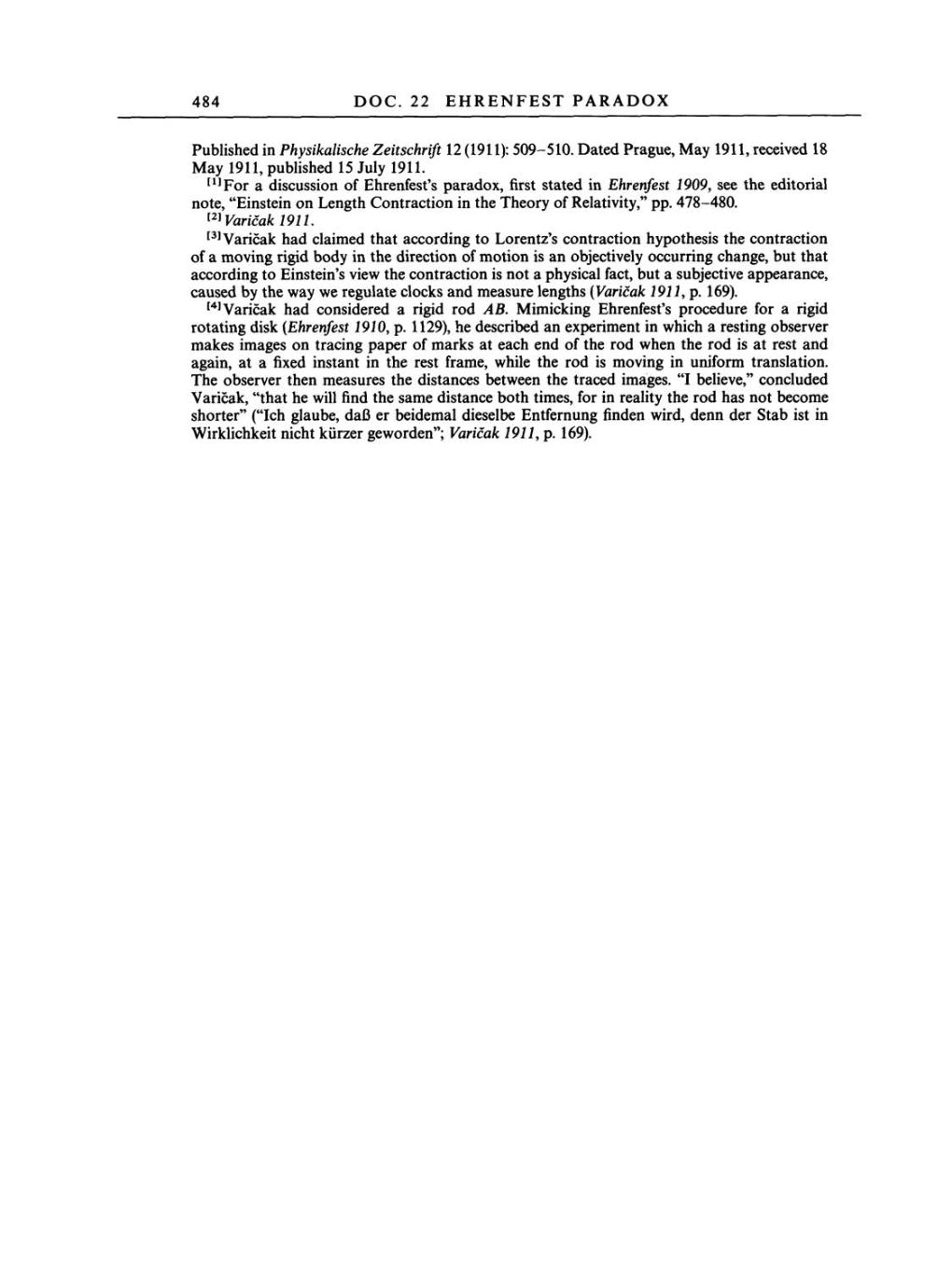484
DOC.
22
EHRENFEST PARADOX
Published
in
Physikalische
Zeitschrift 12
(1911):
509-510. Dated
Prague, May
1911,
received
18
May 1911, published 15
July 1911.
[1]For
a
discussion of Ehrenfest's
paradox,
first stated
in Ehrenfest
1909, see
the editorial
note,
"Einstein
on Length
Contraction
in
the
Theory
of
Relativity," pp.
478-480.
[2]Varicak
1911.
[3]Varicak had claimed that
according
to
Lorentz's contraction
hypothesis
the contraction
of
a moving rigid body
in the direction of motion
is
an objectively occurring change,
but
that
according
to
Einstein's
view
the contraction
is not
a
physical fact,
but
a subjective appearance,
caused
by
the
way we regulate
clocks and
measure lengths (Varicak 1911,
p.
169).
[4]Varicak
had considered
a
rigid
rod
AB.
Mimicking
Ehrenfest's
procedure
for
a
rigid
rotating
disk
(Ehrenfest
1910,
p. 1129),
he
described
an experiment
in
which
a resting
observer
makes
images on tracing paper
of marks
at
each end of the rod when the rod
is
at rest
and
again,
at
a
fixed
instant
in
the
rest frame, while
the rod
is
moving
in
uniform translation.
The observer then
measures
the distances between the traced
images.
"I
believe,"
concluded
Varicak,
"that
he
will find
the
same
distance both
times,
for
in
reality
the rod has
not
become
shorter"
("Ich glaube,
daß
er
beidemal dieselbe
Entfernung
finden
wird,
denn der Stab ist
in
Wirklichkeit nicht kürzer
geworden";
Varicak
1911,
p.
169).
